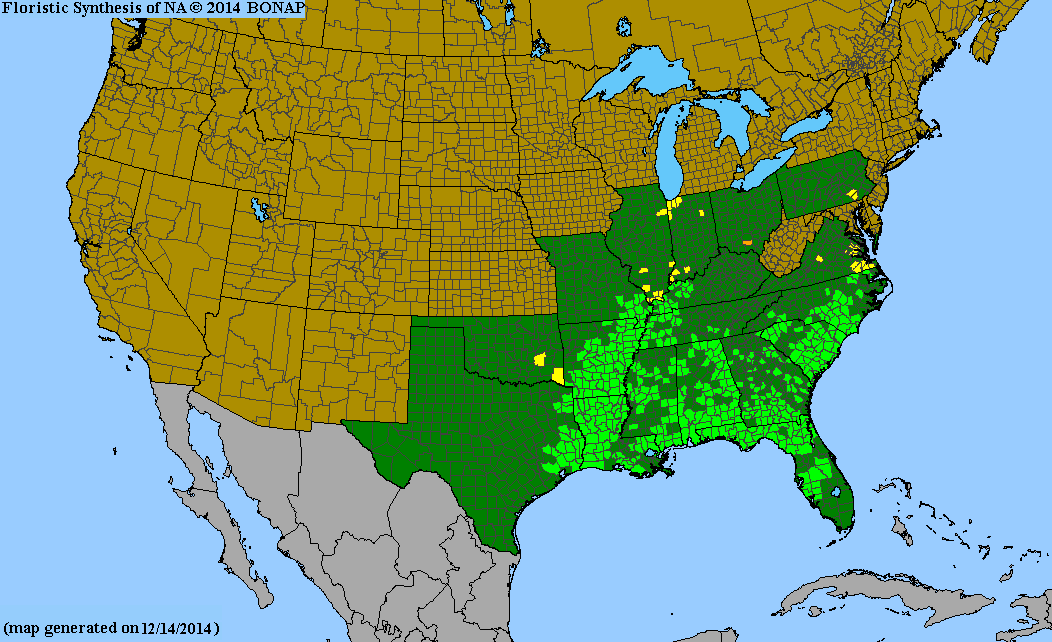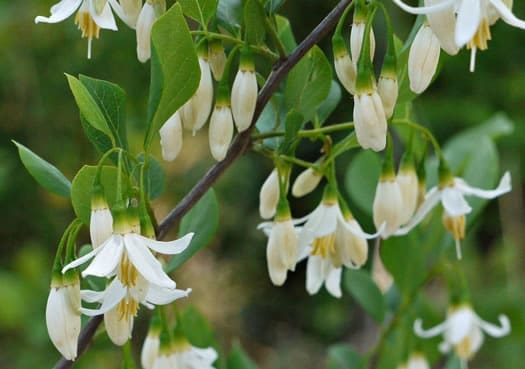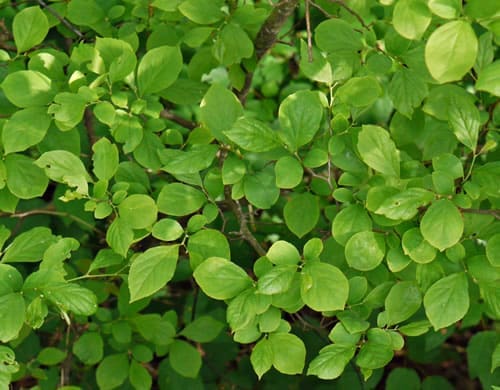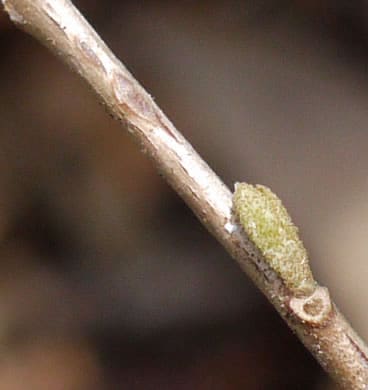Styracaceae
American snowbell
Styrax americanus
Synonyms
Styrax americanus var. pulverulentus, Styrax pulverulentus
Other Common Names
American silverbells
Plant Type
Shrub (less than 10 ft)
Life Cycle
Perennial
Typical Size
6-10 ft. tall
6-10 ft. wide
Tolerant of
Occasional Flooding
Inolerant of
Dry Soil
Propagation
By seed, By cutting, By air-layering
Plant Propagation Notes
Seed propagation requires 60-90 days cold moist stratification. Seed should be collected when it is glossy brown and the capsule has begun to dry. Seed should not be collected from the ground. Can also be propagated by air layering or softwood cuttings.
Plant Planting Notes
Prefers acid, organically rich soil.
Plants/Diseases
No serious insect or disease problems.
Wildlife Benefits
Nectar/pollen source for pollinating insects, Host plant for butterfly larvae
Leaves
The deciduous leaves are alternate, simple with 5-8 secondary veins. One to 3 inches long, elliptical to ovate with serrate margins.
Flowers
Showy and fragrant white flowers hang down like a bell with 4-5 petals.
Fruit
Capsules are globose, gray, and pubescent.
Bark
The dark gray bark is thin and smooth when young, but fissures with maturity.
Toxicity
No known toxicity.

USDA Hardiness Zones
6, 7, 8
Light Exposure
Full Sun, Part Sun/Shade
Soil Moisture
Medium, Moist
Soil Drainage
Well-drained
Soil pH
Acidic (less than 6.0)
Native in South Carolina?
Yes
Plant Native Habitat
Wooded floodplains, swamps, boggy slopes.
Global Conservation Status (NatureServe)
Secure (G5)
Federal Conservation Status (USFWS)
Not Listed
Distribution Notes
Uncommon or rare in SC



